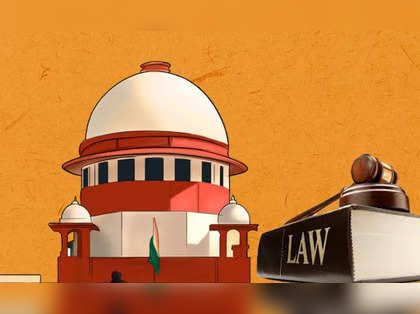Author: Avishi Saini, a student at University Institute of Legal Studies, Panjab University, Chandigarh.
Details of the Case:
- Case Title: United India Insurance Co. Ltd. Vs. Rajendra Singh and Ors.
- Citation: AIR 2000 SUPREME COURT 1165
- Jurisdiction: Hon’ble Supreme Court of India
- Decided on: 14.03.2000
- Hon’ble Judges/Coram: K.T. Thomas and D.P. Mohapatra, JJ.
Brief Facts of the Case:
- Rajendra Singh and his son, Sanjay Singh, filed separate claims before the Motor Accident Claims Tribunal (MACT) in Bulandshahr in 1994. They sought compensation for injuries allegedly sustained in a motor vehicle accident on November 9, 1993, involving an Ambassador car driven by Jai Prakash.
- The Tribunal awarded Rs. 3, 55,000 to Rajendra Singh and Rs. 1, 52,000 to Sanjay Singh, with 12% interest per annum from the date of the claim. The awards became final as neither the car owner nor the Insurance Company (appellant) appealed.
- Four months after the awards, the Insurance Company received a police report indicating that the injuries occurred in a different incident involving a tractor, not the car accident as claimed. The Insurance Company obtained statements supporting this alternate account and filed petitions with the Tribunal to recall the awards based on this new evidence.
- The Tribunal dismissed the petitions, stating it had no power to review its own awards except for correcting calculation errors. The Insurance Company then approached the Allahabad High Court, which also dismissed the writ petition, indicating that fraud was a factual question unsuitable for writ jurisdiction.
- The Insurance Company appealed to the Supreme Court, arguing that both the Tribunal and the High Court erred in refusing to address the fraud allegations, thus necessitating a re-evaluation of the claims.
Issues of the Case:
- Does the Motor Accident Claims Tribunal (MACT) have the inherent power to recall or set aside its own orders if those orders were obtained by fraud, despite the lack of explicit statutory authority for such a review?
- Were the compensation awards granted to Rajendra Singh and Sanjay Singh based on fraudulent claims, and if so, should these awards be set aside based on the new evidence suggesting that the injuries occurred in a different incident?
- Did the High Court err in dismissing the writ petition on the grounds that writ jurisdiction is not appropriate for addressing factual questions of fraud, and does the High Court have the plenary power to examine and rectify judicial decisions obtained through fraud to ensure justice?
Rationale:
- Courts and tribunals have inherent powers to ensure justice and maintain the integrity of the judicial process. This includes the power to review and recall their own orders if it is later discovered that such orders were obtained by fraud. The principle is rooted in the maxim “fraud unravels everything,” meaning that decisions based on fraudulent claims undermine the justice system and must be rectified, even if specific statutory provisions for review are absent. As observed by Chief Justice Edward Coke of England, “Fraud avoids all judicial acts, ecclesiastical or temporal” observed Chief Justice Edward Coke of England about three centuries ago. It is the settled proposition of law that a judgment or decree obtained by playing fraud on the Court is a nullity and non est in the eyes of law. Such a judgment/decree by the first Court or by the highest Court-has to be treated as a nullity by every Court, whether superior or inferior. It can be challenged in any Court even in collateral proceedings.”
- If the compensation awards were indeed predicated on fraudulent claims, the consequence of allowing them to stand unchallenged would be twofold.
- Firstly, it would result in an unjust enrichment of the claimants, who would be unfairly benefiting from deceitful assertions at the expense of the truth and the integrity of the legal process.
- Secondly, it would constitute a misuse of public funds, as compensation payouts based on falsified information would not serve the intended purpose of providing restitution to genuine victims of accidents.
The emergence of new evidence, indicating that the injuries sustained by the claimants actually arose from a different incident involving a tractor, presents a direct challenge to the veracity of the initial claims made before the Motor Accident Claims Tribunal (MACT). This revelation fundamentally alters the basis upon which the compensation awards were granted, casting doubt on their validity and raising concerns about the legitimacy of the entire adjudicative process. In order to uphold the principles of justice and maintain the integrity of the legal system, it becomes imperative to set aside the awards that were potentially obtained through fraudulent means. By doing so, the court can ensure that decisions are grounded in truth and fairness, rather than falsehood and deception. Furthermore, the claims must be re-evaluated in light of the newly surfaced evidence, allowing for a thorough examination of the facts and a fair determination of the appropriate course of action.
- The High Court possesses broad, plenary powers under the Constitution to address injustices, including those arising from fraud. The High Court should not be constrained by procedural technicalities when addressing allegations of fraud that could undermine the legitimacy of judicial outcomes. By dismissing the writ petition on procedural grounds, the High Court failed to fulfill its duty to examine and rectify potential miscarriages of justice resulting from fraudulent actions. This duty includes considering the merits of the fraud allegations to ensure that the judicial process remains fair and credible.
Crux of the Judgment:
- Inherent Power to Address Fraud: The Motor Accident Claims Tribunal (MACT) has the inherent power to recall or set aside its orders if those orders were obtained by fraud. This principle applies even in the absence of explicit statutory provisions for review, as fraud nullifies judicial acts.
- Error by the High Court: The High Court of Allahabad erred in dismissing the writ petition on procedural grounds and failing to address the allegations of fraud. The High Court has a plenary power and a duty to examine and rectify decisions obtained through fraudulent means to prevent miscarriages of justice.
- Re-evaluation of the Compensation Claims: The compensation awards to Rajendra Singh and Sanjay Singh were set aside. The Supreme Court directed the Tribunal to re-evaluate the claims afresh, taking into consideration the new evidence presented by the Insurance Company that suggested the injuries were sustained in an incident different from the one claimed. The Tribunal must afford a reasonable opportunity to the Insurance Company to substantiate their allegations of fraud and to the claimants to rebut these allegations.
- Legal Remedy for Fraud: The Supreme Court affirmed that judgments or decrees obtained by fraud are nullities and can be challenged in any court, even in collateral proceedings. This principle ensures that fraudulent claims do not result in unjust enrichment and that public trust in the judicial process is maintained.
Conclusion:
The Supreme Court’s ruling in this case reaffirms the fundamental principle that fraud cannot be tolerated in judicial proceedings. By asserting the inherent power of courts and tribunals to address fraud, the Court ensures that justice remains paramount and that the integrity of the judicial process is upheld. The decision underscores the duty of the judiciary to rectify miscarriages of justice caused by fraudulent acts, thereby safeguarding public trust in the legal system. As the case moves forward with a fresh evaluation of the compensation claims, it serves as a reminder that the pursuit of truth and fairness must prevail, even in the face of deception.
FAQs (Frequently Asked Questions):
- What was the nature of the case before the Supreme Court?
- The case before the Supreme Court involved allegations of fraud in compensation claims filed with the Motor Accident Claims Tribunal (MACT) and subsequent legal proceedings.
- What were the main issues addressed by the Supreme Court?
- The Supreme Court addressed whether the MACT had the power to review its orders obtained by fraud, the validity of compensation awards based on alleged fraudulent claims, and the jurisdiction of the High Court to address fraud allegations.
- What was the Supreme Court’s ruling regarding the MACT’s authority to address fraud?
- The Supreme Court affirmed that the MACT has inherent power to recall or set aside its orders if obtained by fraud, regardless of statutory provisions.
- What error did the Supreme Court find with the High Court’s decision?
- The Supreme Court found that the High Court erred in dismissing the writ petition without addressing the allegations of fraud and in failing to exercise its plenary power to rectify fraudulent decisions.
- What action did the Supreme Court take regarding the compensation awards?
- The Supreme Court set aside the compensation awards and directed the MACT to re-evaluate the claims afresh, considering the new evidence of fraud.
- What legal principle did the Supreme Court reaffirm regarding judgments obtained by fraud?
- The Supreme Court reaffirmed the principle that judgments obtained by fraud are nullities and can be challenged in any court, even in collateral proceedings.
- What implications does the ruling have for future cases involving fraud in judicial proceedings?
- The ruling underscores the judiciary’s duty to address fraud to maintain the integrity of the legal system and public trust in the judiciary.
- What is the next step in the legal process following the Supreme Court’s decision?
- Following the Supreme Court’s decision, the case will be remanded to the MACT for a fresh evaluation of the compensation claims in accordance with the Court’s directions.



